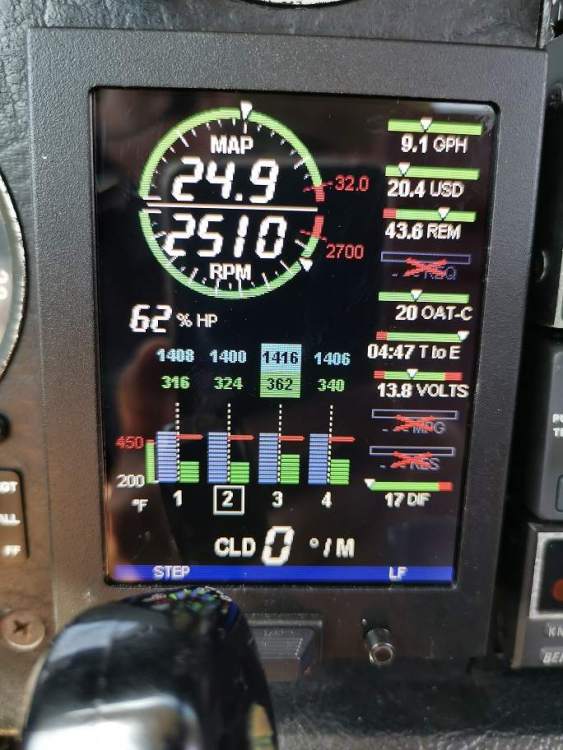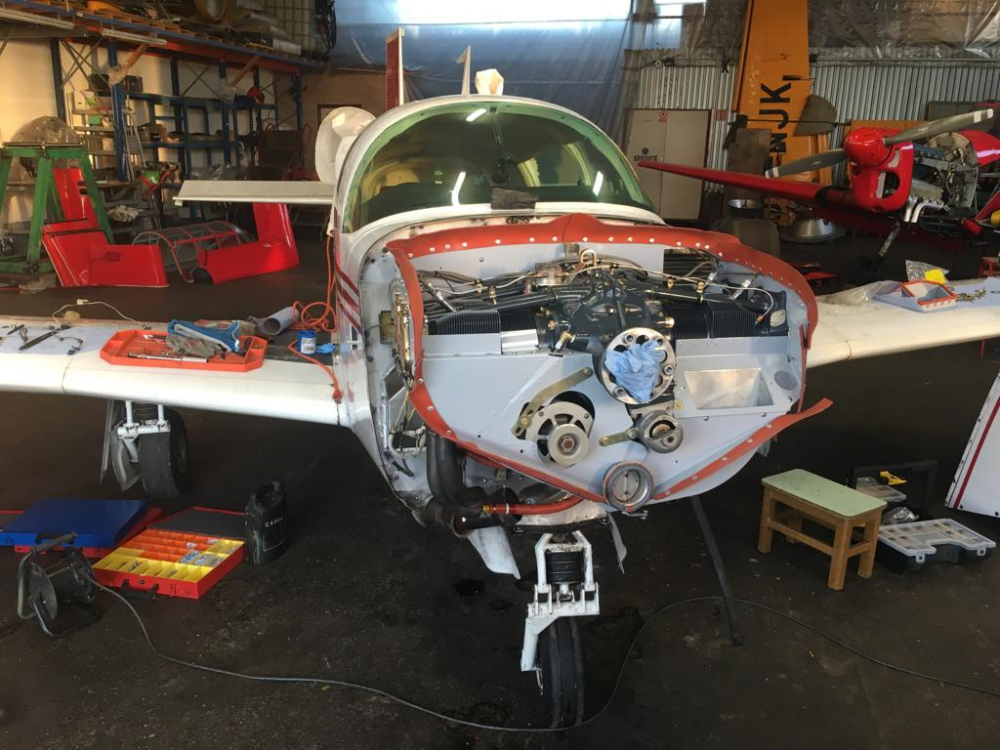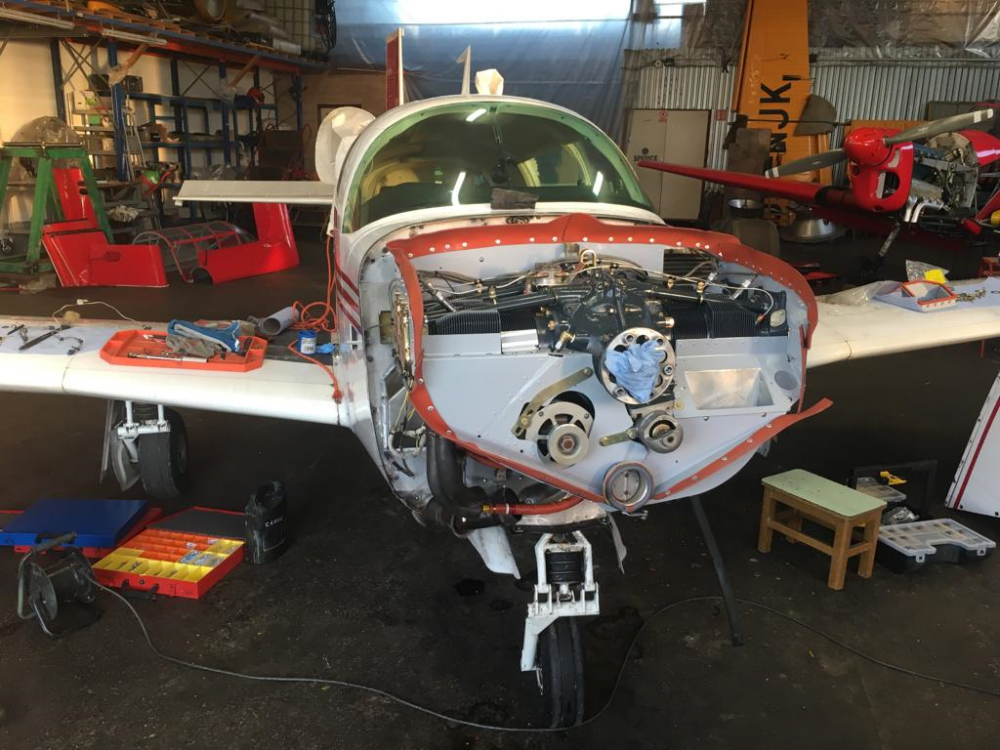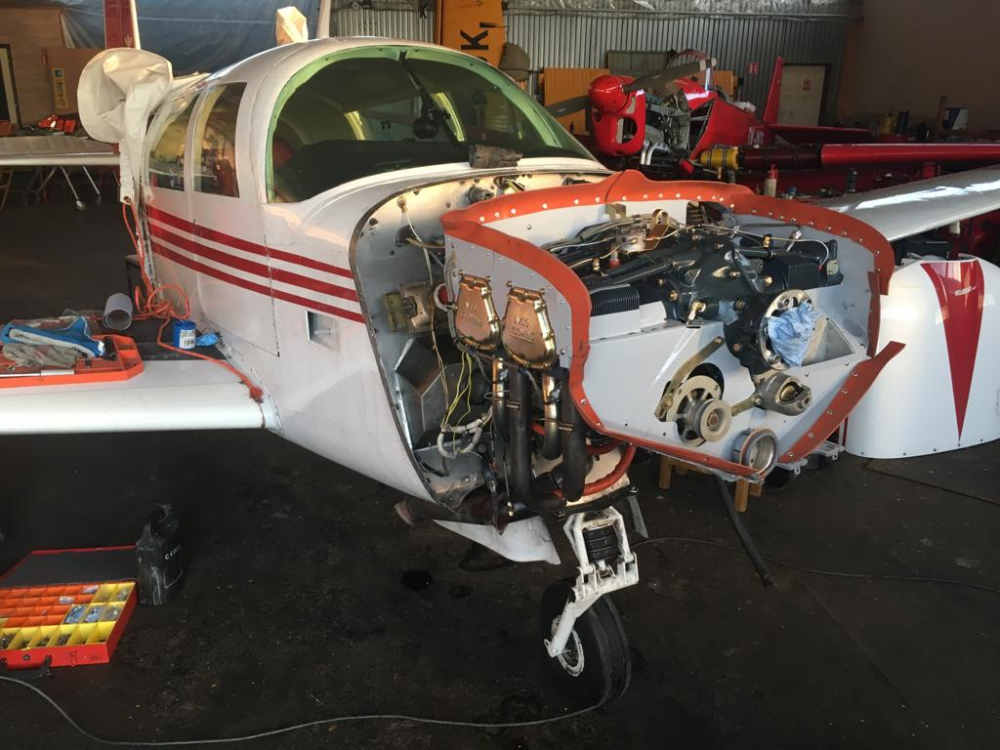
aidanf
Basic Member-
Posts
45 -
Joined
-
Last visited
Profile Information
-
Location
France
-
Reg #
N201HS
-
Model
M20J
Recent Profile Visitors
The recent visitors block is disabled and is not being shown to other users.
aidanf's Achievements
-
ahoy there - @Sabremech - whats the latest on your epic journey of discovery through the bowls of DAR and FAA approvals?
-
Put a diesel in it - the CD 300 from continental cranks out 300HP - sure its heavier but way more economical - you could carry 70 gallons of Jet A instead of 100 of Avgas - thats 180 pounds of savings, and with the extra horsepower you could add a parachute and some useful load by replacing that enormous manpower intensive aluminium spar with a carbon fibre one.
-
Actually I tell a lie - just checked the prices again and they are down to 1725 dollars
- 42 replies
-
- top overhaul
- cylinders
-
(and 1 more)
Tagged with:
-
I was in a similar situation last year, but in fact the high oil use was because of wobbly valves, cylinders lead hard lives and overhauling them is stressful as well, in the end new cylinders are the way to go - I went with continental prime Nicr cylinders for my J and I am really happy with them - they ran in really quick, the EGTs are balanced right across the board and it now runs like a clock. It expensive(1900 per cytlinder) but to be honest I enjoy flying more now because I am confident in the engine - oil use, strange noises, stumbles, and parts overhauled by "some guy" just lead me to spend more time looking at the engine monitor than looking out the window or talking to my passengers.
- 42 replies
-
- top overhaul
- cylinders
-
(and 1 more)
Tagged with:
-
So as a follow up to the engine odyssey. The Nicr cylinders ran in very quickly – I added about half a quart after the first 3 hour flight and since then the oil consumption has fallen off to very little(less than half a quart in the last 23 hours), I changed the oil and filter after 10 hours and it was clean. The cylinders are very well balanced, after the first 10 hours I started running LOP and its very easy with the balanced temperatures – as you can see in the picture below the egts are within 20 degrees of each other (high cht temp on cylinder 3 is normal because the probe is under the spark plug on that one – JPI says its normal to see a 50 degree difference) So all in all I would recommend the Continental prime cylinders for Lycoming engines, as for the other components time will tell. Still cannot find a hanger in the Bordeaux area so I am SOL.
-
I just looked at the pricelist - to upgrade a 150 you are looking at 16k - its seems a bit disingenuous to say system total 11,590 then add a separate section with 4900 dollars of "additional required equipment" - riddle me this what do you get from this that you do not get with a gfc500 - hint gfc 500 at least you get brand new modern tech servos.
-
She is home - finally - flew her down from Strasbourg to Bordeaux on Friday(3hours) - had to keep her low as I am still running her in, so given that it was the hottest day in June on record it was a matter of keeping hydrated. Engine started up and ran beautifully all the way down - keep running it rich at the moment until its fully bedded in but the CHTs dropped off after about 2 hours of hard running (nickel carbide coated cylinders), 157knots(little to no wind) groundspeed at 6000 feet, 28 degrees C OAT, 12.5 gallons per hour, only used a couple of ounces of oil on the flight down - After I change the oil at 10 hours I will start experimenting with LOP - and oh yeah - I needed a new fuel servo - the failure mode was a cylinder dropping off (ie no ignition - no cht etc) when the engine was accelerated past 1300 rpm --
-
Actually found 2 plugs slightly loose - which messed up the fuel mixture which caused the engine to run badly - so that's fixed - now we have a fuel servo issue - the engine idles ok but once you advance the throttle a bit it goes to full power and no adjustment possible - have to cut the mixture to shut it down - maybe just a bit of dirt in the servo - don't know but if I need to get the servo done that's another 2k down the drain.
-
so I flew out last week to pick up the plane and the saga continues - the engine ran fine on the first flight (running it hard at low altitude for an hour) but the JPI 830 was reporting very high numbers on cylinder 3 and 4 - 1 and 2 were ok (my mechanic had previously run the plane on the ground for about 2 hours) on the second flight there was a small stumble on takeoff but a dose of boost did the job - still high temps on cylinders 3 and 4 - Now the mechanic says that these JPI probes are not the best and are quite fragile ( cylinder 3 factory gauge was showing middle of the green when the JPI was telling me 430 F, and cylinder 4 egt was stuck around 1400 constantly irrespective of power settings) So ok - I take off on a long flight across Germany(2 and half hours) - still at low altitude ~3500 feet and running the engine between 65 and 80% - I can see eventually that cylinder 3 actually breaks in I can see the temperature drop about 45F down to 370 (cylinder 1 and 2 were at 340), engine was running very smoothly though. Land and fuel - half an hour later the engine starts up no trouble and idles no issue but if I try to run it up its vibrating all over the place and anything over 1700 RPM cylinder 4 EGT and CHT disappear like the cylinder is not firing at all, so I found a hanger and thankfully being france took a high speed train home(still took several hours longer than flying though) My mechanic is gong to come out this week and look at it - good thing I am stubborn otherwise I would have given up a long time ago - once we clean these teething issues up we will have the nicest little J going. With the new governor and engine it is about 6 knots faster than the old engine - I think once we get it tuned in and running it will be a really nice ship
-
sorry - I have been having a lot of difficulties the last week connecting to the mooneyspace forum site - Sad story is that my mechanic was called away to support the red bull team and I had to delay going out to pick it up - this is maddening, the plane is ready but I need him available for an inspection after the first flight at least. Now scheduled to pick it up on the 8th of May
-
-
for the lifters they have a diamond coating to prevent spalling, for the cam I have not heard of anything - I went with a superior cam anyway on the recommendation of my mechanic.
-
the coatings are meant to protect the cylinders from corrosion, most privately owned planes are not run often enough to prevent some corrosion on the cylinder walls . The coatings are also a lot harder than steel so it possible if the engine is run right that you will not wear out the cylinder, they are also easier to break in,
-
they come as complete assemblies ready to bolt on - looking at the prices now they have gone up to 1950 dollars, my mechanic offered to replace the guides and skim the cylinders as they were still in spec, but I was thinking that the heads were really old, and newer cylinders have hardened valve seats which will help with whatever unleaded fuel comes up in the future.
-
Components in Europe are stupid expensive - I bought the cylinders off of airpower - at thee time they were 1800 dollars each, a European distributor quoted me 3000 dollars, everything else was similar - 30-40% more expensive than in the States - lets just say my carry on bag coming back from the States required a significant effort to store in the overhead, homeland security gave me some funny looks when they inspected my bag.







